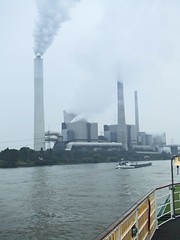
Due to the harmful effects of greenhouse gases (GHG) emissions to the atmosphere that may cause adverse impacts to living beings and humans, the EPA approved the gases are classified as hazardous pollutants, and move as approved by the U.S. Supreme Court. Greenhouse gases contribute to global warming as only accumulate in the air for a long while increasing the temperature and lead to climate change.
The new EPA rule states that greenhouse gases could endanger the health and welfare. The ruling gives the federal agency the power to enforce the regulations of the Clean Air Act, U.S. to control the pollutants that cause global warming or depleting ozone layer. This authority would exist if the U.S. Congress does not act on the issue from a legislative standpoint.
On April 17, 2009 the mandates of the EPA rule decidedly strict regulations on emissions of carbon dioxide and greenhouse gases that have been identified as damaging to the population and the environment. To begin to phase out the use of refrigerants and turn to alternatives that are kinder to the environment, the results of hazard warning sent to services such use.
After the U.S. Supreme Court approval, the EPA opened a public comment period of 60 days on its findings on carbon dioxide (CO2). EPA is required to apply the rules and regulations of the refrigerant gas after closes.S comment period. Congress has not enacted a law in advance regards to climate change.
It is evident from the recent approval rule EPA facilities with environmentally harmful chemicals should start looking for efficient and cost effective solutions to track and report their emissions. The Obama and many other world leaders are firm in their commitment to improving air quality and reduce global climate change.
More than 7 million tons of greenhouse gases are discharged from the United States each year. The EPA rule is designed to reduce these harmful emissions by targeting industries that are the worst offenders. These include power plants fired with coal, stationary pollutants such as refrigerant gas facilities that use, industrial sources and motor vehicles.
As a result of the EPA rule contained in previously approved U.S. facilitiesMany are finding ways to use software to automatically monitor refrigerant leakage to the implementation of the Clean Air Act. The regulations limit the production and use of hydrochlorofluorocarbons (HCFCs) and chlorofluorocarbons (CFCs), as found in refrigerants, which are both ozone-depleting substances and high global warming.
The EPA rule is added to the current phase of the refrigerant gases used in commercial refrigeration, air conditioning and fire suppression systems. In addition, the Obama administration is considering plans as a carbon cap and trade system program for companies to invest in green operating procedures and information systems to assist in the management, monitoring and reporting of greenhouse gas emissions . Other ideas are a direct tax on carbon emissions and some others in the project from regional regulatory authorities such as the California Air Resources Board (CARB).
Environmental Protection Agency (PE) will begin holding meetings to discuss the requirements necessary to issue its final decision immediately. In the coming months, we expect the ratio of carbon management standards was perfected. There is some doubt that the time they can take to effectively implement the new regulations.
It may take several months, one year or more, or even longer. It is clear no matter how long the current rules applying to the EPA has sent a clear message that the time to take action against climate change is now.
While organizations in better understanding the carbon emissions reporting protocols and implement information management systems to help carbon compliance reporting. Although the final threshold is still in question, the fact is that monitoring carbon emissions is an important consideration for any large organization.